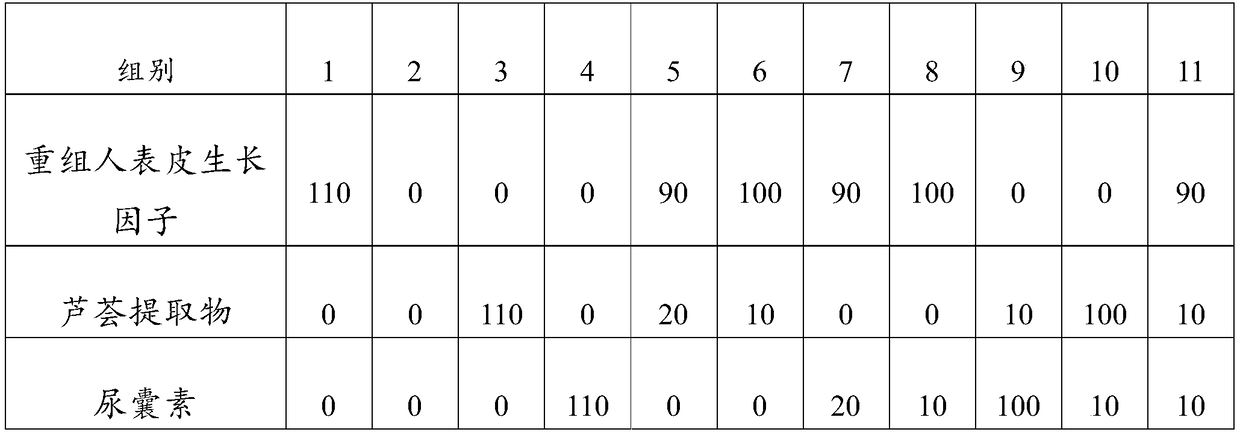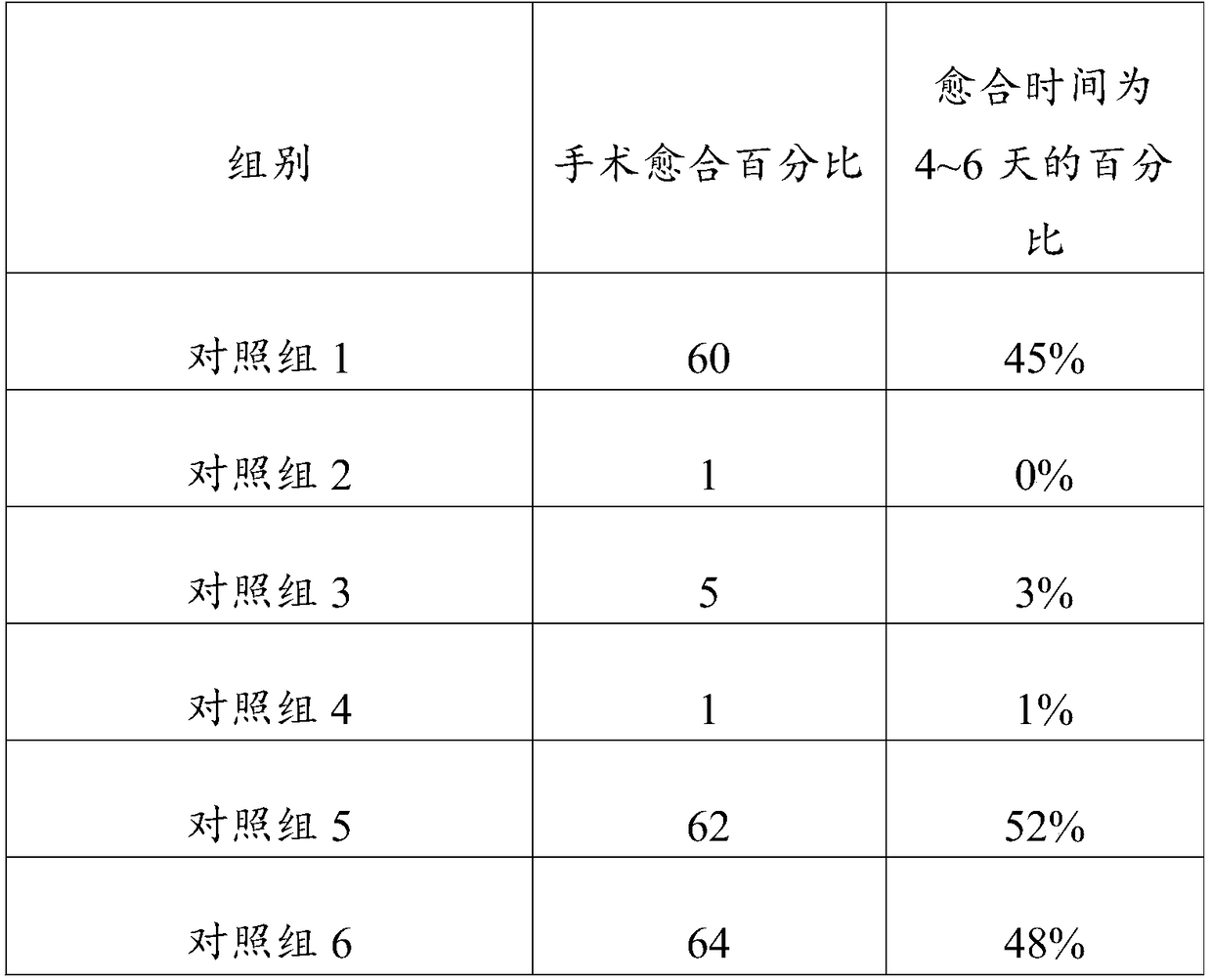Biological glue for promoting local hemostasis of postoperative wounds and promoting epithelization of postoperative wounds, and working method thereof
A local and wound technology, applied in the field of biological glue to promote local hemostasis of postoperative wounds and promote postoperative wound epithelization, can solve the problems of no wound epithelization, ischemic necrosis of mucoperiosteal flaps, and limited operating space, and achieves The effect of shortening hospital stay and treatment time, reducing postoperative discomfort, and reducing economic pressure
- Summary
- Abstract
- Description
- Claims
- Application Information
AI Technical Summary
Problems solved by technology
Method used
Image
Examples
Embodiment 1
[0034] An embodiment of the bioglue for promoting local hemostasis of postoperative wound and epithelialization of postoperative wound described in the present invention, the bioglue for promoting local hemostasis of postoperative wound and epithelialization of postoperative wound described in this embodiment includes reagent A and reagent B,
[0035] The reagent A contains 0.2ml prothrombin and 0.2ml calcium chloride solution; the reagent B contains the following ingredients in parts by weight: 68 parts of fibrinogen, 85 parts of recombinant human epidermal growth factor, 8 parts of glycerin, and aloe extract 8 parts of allantoin, 0.5 parts of mannitol, 5 parts of tea tree essential oil, and 5 parts of vitamin E.
[0036] In this embodiment, a working method of the above-mentioned bioglue for promoting local hemostasis of postoperative wounds and epithelialization of postoperative wounds, the method is as follows: after each component in reagent A and reagent B is uniformly d...
Embodiment 2
[0039] An embodiment of the bioglue for promoting local hemostasis of postoperative wound and epithelialization of postoperative wound described in the present invention, the bioglue for promoting local hemostasis of postoperative wound and epithelialization of postoperative wound described in this embodiment includes reagent A and reagent B,
[0040] The reagent A comprises prothrombin and calcium chloride solution; the reagent B comprises the following ingredients in parts by weight: 80 parts of fibrinogen, 90 parts of recombinant human epidermal growth factor, 10 parts of glycerin, 10 parts of aloe extract, 10 parts of allantoin, 1 part of mannitol, 10 parts of tea tree essential oil, and 10 parts by weight of vitamin E.
[0041] The present embodiment is a working method of the above-mentioned bioglue for promoting local hemostasis of postoperative wound and epithelialization of postoperative wound. B are stored separately to obtain the biological glue.
[0042] When the b...
Embodiment 3
[0044] An embodiment of the bioglue for promoting local hemostasis of postoperative wound and epithelialization of postoperative wound described in the present invention, the bioglue for promoting local hemostasis of postoperative wound and epithelialization of postoperative wound described in this embodiment includes reagent A and reagent B,
[0045] The reagent A comprises prothrombin and calcium chloride solution; the reagent B comprises the following ingredients in parts by weight: 92 parts of fibrinogen, 92 parts of recombinant human epidermal growth factor, 15 parts of glycerin, 15 parts of aloe extract, 12 parts of allantoin, 2 parts of mannitol, 8 parts of tea tree essential oil, and 8 parts of vitamin E.
[0046] The present embodiment is a working method of the above-mentioned bioglue for promoting local hemostasis of postoperative wound and epithelialization of postoperative wound. B are stored separately to obtain the biological glue.
[0047] When the bioglue of...
PUM
 Login to View More
Login to View More Abstract
Description
Claims
Application Information
 Login to View More
Login to View More - R&D
- Intellectual Property
- Life Sciences
- Materials
- Tech Scout
- Unparalleled Data Quality
- Higher Quality Content
- 60% Fewer Hallucinations
Browse by: Latest US Patents, China's latest patents, Technical Efficacy Thesaurus, Application Domain, Technology Topic, Popular Technical Reports.
© 2025 PatSnap. All rights reserved.Legal|Privacy policy|Modern Slavery Act Transparency Statement|Sitemap|About US| Contact US: help@patsnap.com



